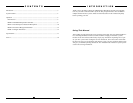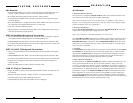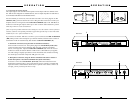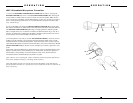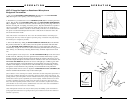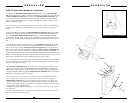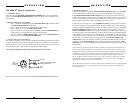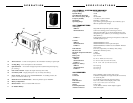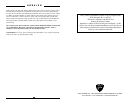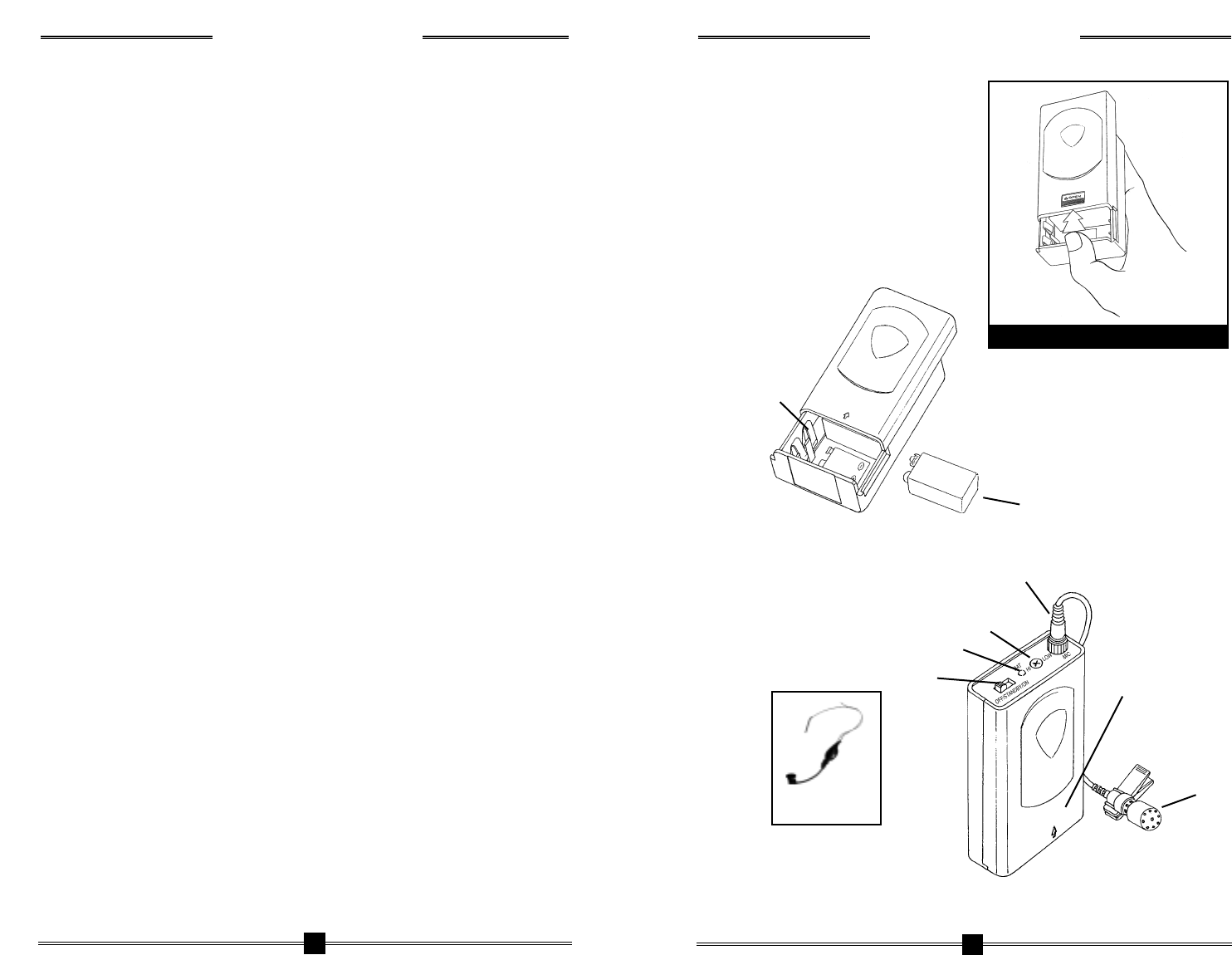
11
17
18
OPERATION
Headworn
Microphone
21
Opening Battery Compartment
20
17
22
23
24
19
WLT-15 Lavalier/Lapel or Headworn Microphone
Bodypack Transmitter
1. Snap open the BATTERY COMPARTMENT (17) and insert a fresh 9V BATTERY
(18), observing the correct polarity. Close the compartment.
2. The WLT-15 is provided with a 3.5 mm LOCKING JACK (19) for connecting the micro-
phone. Plug in either the LAVALIER/LAPEL (20) or the HEADWORN MICROPHONE
(21), as supplied. To secure the connection, turn the metal slip ring on the plug clockwise to
thread it on to the jack. To unplug, reverse the process. Slip the transmitter into a pocket or
clip on to your clothes. To use the lavalier mic, attach it at chest level. Do not place too
close to the mouth – a distance of about six inches usually works best. To use the headworn
mic, place it on the head and adjust the mic boom so that the mic is about one inch to the
side of the front of the mouth.
(Note: The lavalier or headworn mic wire is also the transmit antenna, and rolling up or
shortening the wire may reduce the effective operating range. Extend the wire fully during
use and keep it as straight as possible.)
3. Turn on the WLT-15 by sliding the OFF/STANDBY/ON SWITCH (22) to the STAND-
BY position (transmitter on, audio muted) or the ON position (transmitter and audio both
on). The BATTERY INDICATOR LED (23) will give a single quick flash, indicating
usable battery strength. In the case of a dead or low battery, the LED either will not go on at
all or will stay on continuously, indicating that the battery should be replaced with a fresh
one.
4. The microphone is now ready to use. The TX LED INDICATOR (5) on the 401 receiver
should now be lit, indicating a received signal from the transmitter. When ready to speak,
slide the transmitter switch to the ON position and adjust the volume of the receiver as per
the Audio Output Microphone Connection section of the above 401 receiver instructions. The
AF LEVEL LED DISPLAY (9) on the 401 receiver will light up to 5 LEDs (4 green and 1
red) for all input signals. Occasional flickering on and off during use of the top red LED
indicator in this display is normal, however if the red LED stays on continuously, it means
the signal is too loud and there is the possibility of overload distortion. Re-position the
microphone farther from the source or adjust the AUDIO INPUT LEVEL CONTROL (24)
until the red LED indicator flickers only on the loudest inputs.
[Note: Observe care in selecting P.A. volume, transmitter location and speaker placement so
that acoustic feedback (howling and screeching) will be avoided. Please also observe the
pickup patterns of the microphone selected: omnidirectional mics pick up sound equally from
all directions and are prone to feedback if not used carefully. Unidirectional mics are more
resistant to feedback, but pick up sound sources best that are directly in front of the mic.
Also, mics that are farther from the sound source, such as lavaliers, require more acoustic
gain and thus are also more prone to feedback than close-source mics such as handheld or
headworn mics that are used close to the mouth.]
(Note: Microphone elements can easily be destroyed by the buildup of salts and minerals
from perspiration and saliva. It is good practice to put a windscreen on the mic element at
all times to protect it.)
OPERATION
10




